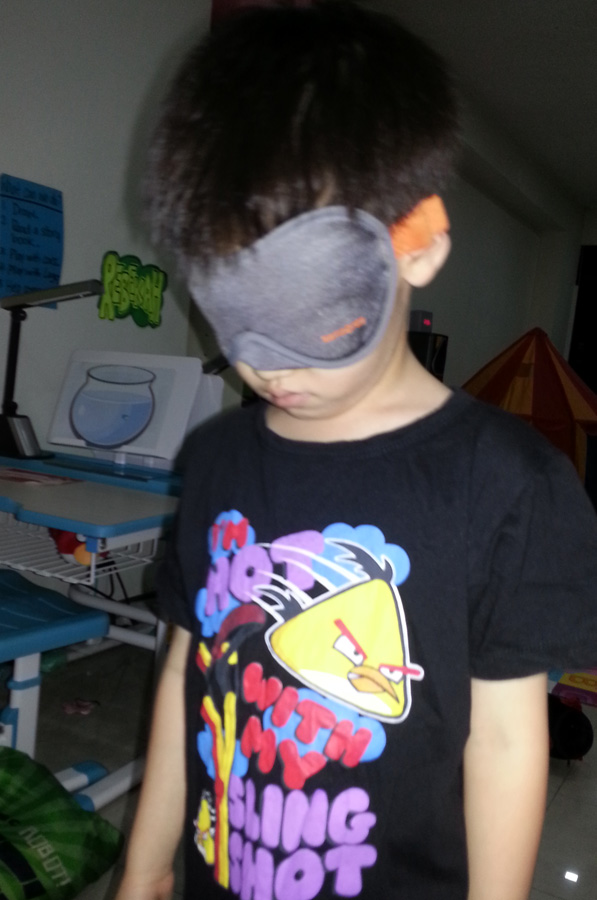
I shared in an earlier post how the kids are fighting every day, and how it’s come to a point I am seeing blood.
So what does a mother do when the fighting start? How much conflict should she tolerate? When should a mother intervene, and how does she do that?
In this post, I share three principles Fatherkao and I abide by.
Rule #1 Don’t get involved
It is common for siblings to disagree, squabble and fight. I remember what Dr Kevin Leman says in his book Making Children Mind Without Losing Yours that when children fight, they are actually “cooperating with each other”:
“It seems odd to call fighting an act of cooperation, but that is exactly what is happening. It is extremely difficult to get a fight going with only one person.”
He goes on to say that the best way to handle this is to give the children what they want. If they want to fight, let them. Our right as parents is to say where and under what conditions they can fight – in a room elsewhere, at the backyard, away from everyone so that it does not interfere with the peace and welfare of others in the home. He also mentions one thing which I see happening when the kids fight.
“Their fighting, for the most part, was designed to get the parents needlessly involved in their hassles. The sooner parents learn to stay out of their children’s hassles the sooner they will teach their children greater responsibility and accountability.”
I couldn’t agree more. My job as a mother is not to eliminate conflict and rivalry between siblings. Conflict at home is natural. My job is to help each child resolve his or her conflicts in a positive way and build psychological muscles for dealing with the realities of life. So when I see a fight starting, I usually order the kids to take it elsewhere, out of my sight. I shoo them into the room, close the door and say, “Resolve the matter. Come out when you’re done.”
And you know what? Most of the time, they immediately say, “We don’t want to fight anymore, Mama.”
Rule #2 Step in only when there’s a danger of physical harm
Following Rule #1 doesn’t mean that I encourage my kids to fight. I see it as an opportunity for them to resolve their conflicts without me as their audience. The problem with always intervening is that you risk creating other problems. The kids may start expecting help and wait for you to come to the rescue rather than learning to work out the problems on their own. One kid would also feel more “protected” than another, and that would inadvertently make the kid feel he or she can get away with things, while at the same time stirring up sentiments of resentment in the other kid who is not “rescued”.
But if there’s a threat of physical harm, there’s a need to call the shots. Sometimes one child may pick a fight with another who is totally outmatched in size and strength. Sometimes a child may be provoked so badly by name calling and taunting he loses control and smacks the one provoking him. Sometimes a child may use things to hurl at another as an act of retaliation. These have all happened (and more – pushing and shoving and biting and kicking, yes, all and more) and I have had to clean up the sometimes very bloody battlefield with a very broken heart. This is when all involved in the battle gets a time-out and a swipe of the cane on their bums. This is when I insist that nobody is right and everybody is wrong and they all kiss and make up. Fatherkao sometimes insists that they think of three things to do to show love to each other, especially to the one injured.
So no matter how bad they feel or how angry they are, when the adults intervene, it usually means that they will be forced to hug, kiss and say “I love you.”
Rule #3 Let reality be their teacher
This one is a little difficult to follow. I’m always more inclined to protect the kids and make excuses for their misbehaviour – he must be tired, she feels neglected, this only happened twice – but thankfully, my partner in parenting, i.e. the other parent, is someone who stands quite firm and is more principled than I am. This rule we have at home is inspired by Dr Kevin Leman, who coined the term “reality discipline” which basically means to let nature take its course. And when nature doesn’t take care of the problem, the parents help nature along. The fundamental idea is to not rescue your kids from the consequences of failed responsibility. You allow life lessons and experiences to teach your children while they are still at home under your loving authority. Parents should not hover (like helicopters) or rule autocratically but authoritatively guide and direct them in a loving relationship.
I’m still learning to do this, and am consciously looking out for ways to teach the children. Recently, a fight broke out between Ben and Nat. Nat was perceived to be attempting to destroy something Ben has built, when actually he was just ruled by curiosity and driven by the need to explore. Ben obviously doesn’t understand developmental milestones, got upset and swung a plastic bucket (the sandcastle type) at him. What he didn’t know was that that bucket had a crack and the broken piece which was jutting out cut Nat on the flesh just below his eye.
This was the perfect opportunity to apply Rule #3. Fatherkao calmly took Ben to a corner, ordered for a time out and put on a blindfold for him. We thanked God that Nat was not wounded fatally but needed Ben to understand what it would be like if his eye was injured. So he went around not being able to see during dinnertime, all the way till it was almost bedtime. In fact, he ate his dinner blindfolded.
We didn’t lecture, didn’t scold, didn’t cane. In fact, credit goes to my husband who remained so calm it made me a little embarrassed (I had earlier gone hysterical but held my tongue from screaming at Ben).

Part of reality discipline: teaching Ben what it’s like if he’s lost his sight
There you have it. Three things that I try to remember when the fights begin at home. By the way, there’s gonna be Rule #4 come the day I can find boxing gloves their size. It’ll be “Make kids put on boxing gloves”.










